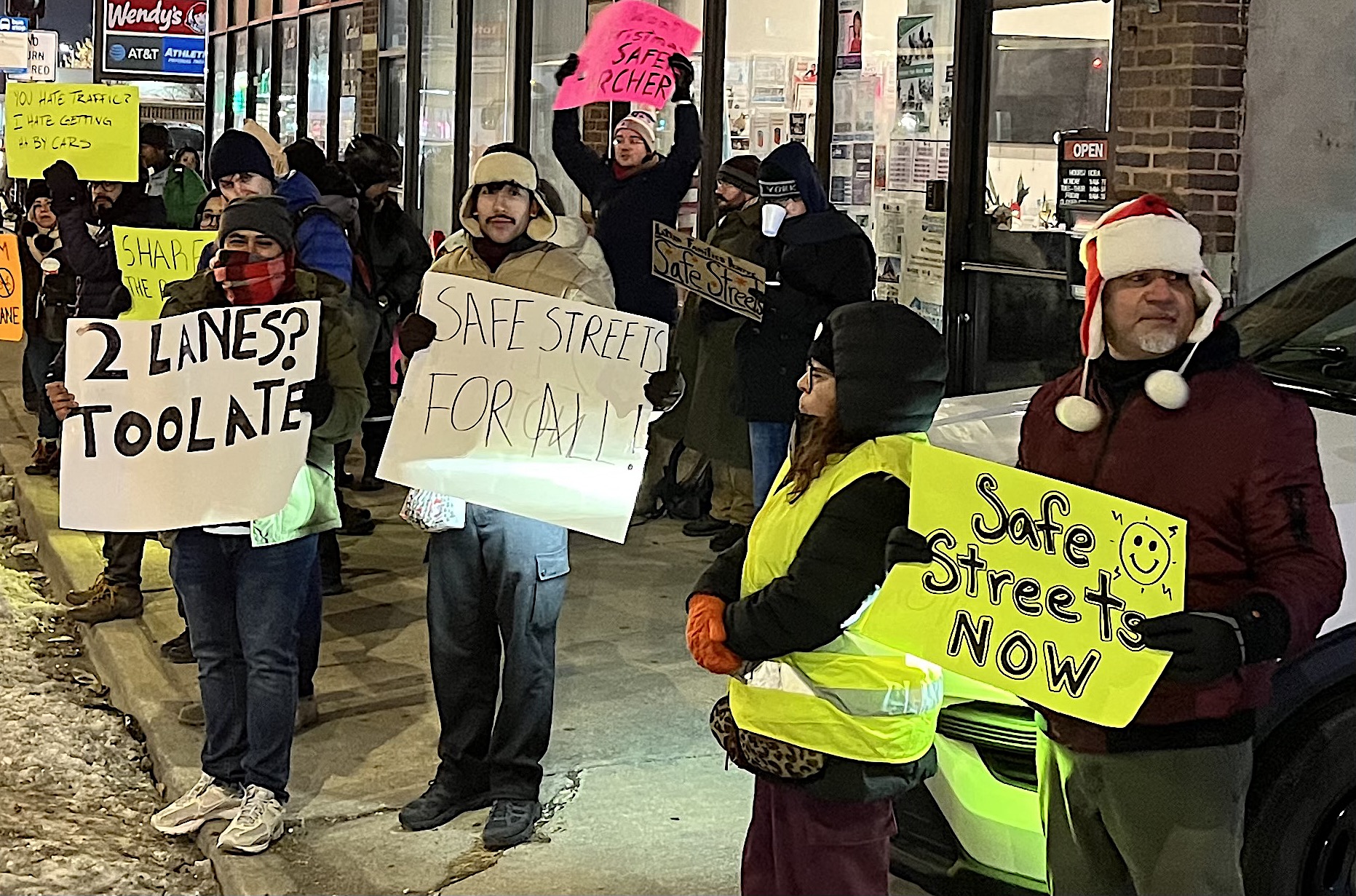There’s more good news on the Divvy bike-share front. The Chicago Department of Transportation announced this morning that they scored a $3 million federal Congestion Mitigation and Air Quality Improvement grant to add 75 more docking stations to the 400 already planned. The system recently reached 300 stations and 3,000 bikes.
“Chicagoans have thoroughly embraced Divvy and the idea of bike sharing as part of their everyday commutes,” said Mayor Rahm Emanuel in a statement. “These additional resources will allow us to extend the system at no expense to Chicagoans.” That’s not exactly true, since CMAQ and other federal infrastructure grants require that local funds pay for 20 percent of the cost of a project and, of course, Chicago residents pay federal taxes as well, but the grant is still a great boon to our local bike network.
The $27.5 million cost of launching the first 400 stations was bankrolled by $18 million in CMAQ money and $4 million in federal Transportation Investment Generating Economic Recovery funds, plus $5.5 million in local dollars. In four months of operation, the system has racked up some 650,000 trips and 1.5 million mile, with 125,000 daily passes and 11,000 annual memberships sold.
CDOT also announced that it has applied for a $3 million Illinois Transportation Enhancement Program grant for another 75 stations, which would bring the grand total to 550 stations. 20 of these would be used to expand the system into Evanston and Oak Park, according to Deputy Commissioner Sean Weidel, who said the suburban stations would be interoperable with ones within the city limits.
380 of the 400 planned docking station locations. View in a larger map.
The initial 400 station sites were chosen with an emphasis on locations with high population density, as well as access to transit stations, retail, employment centers and other trip generators. While the coverage area is fairly evenly distributed between the North and South Sides, it generally extends only a few miles west of the lakefront.
CDOT’s quest for density, which officials said was necessary to make the system financially solvent in it’s early days, also resulted in a disproportionate number of stations being sited in largely white, relatively affluent neighborhoods. A number of low-income communities of color on the South Side neighborhoods have also received Divvy bikes, but at a lower station density, and most West Side neighborhoods have not gotten bikes yet. Weidel promised the new funding will be used to add more stations to less Divvy-dense areas currently in the planned coverage area, as well as expanding the system to new areas, including more low-income communities.
Another issue that has limited Divvy access has been the challenge of making memberships available to unbanked Chicagoans, since a daily pass or membership requires using a credit card to ensure the $1,200 bike replacement fee will be covered in case of loss or theft. CDOT has talked to community organizations and churches about splitting the financial liability for memberships for their clients and parishioners, but so far interest has been light.
“We have an outreach meeting this afternoon to discuss this issue,” Weidel said today. “After numerous conversations over the last few months, we think it's equally important to work with the banked in diverse communities to increase active transportation use, including Divvy. We'll be working with trusted community partners on this and the unbanked issue over the next few months.” One such outreach project is the Go Bronzeville transportation demand management program, which we’ll be reporting on in the near future.
While the expansion of Divvy is an exciting development, CDOT’s press release exhibits a bit of Second City syndrome, boasting that with 475 stations Chicago will have the largest bike-sharing system in North America and the fifth largest in the world. While it’s true New York City currently has only 331 stations, and Montreal has 434, NYC has about 6,000 bikes and Montreal has about 5,000. Even if the ITEP funding comes through, we’d only have about 5,500 bikes, so it’s wishful thinking to claim Divvy will be larger in the future than the Citi Bike program is now.
On the other hand, as a Streetsblog reader Dennis Hindman pointed out, New York is about 3.07 times the population of Chicago. We currently have roughly one Divvy bike for every 725 residents, almost twice the service level compared to their ratio of one Citi Bike for every 1390 people. Once we expand to about 4,750 bikes, we’ll have one for every 571 Chicagoans, and with 5,500 bikes there will be one for every 497 citizens, almost three times the bike-share density of NYC. That will be something to brag about.






